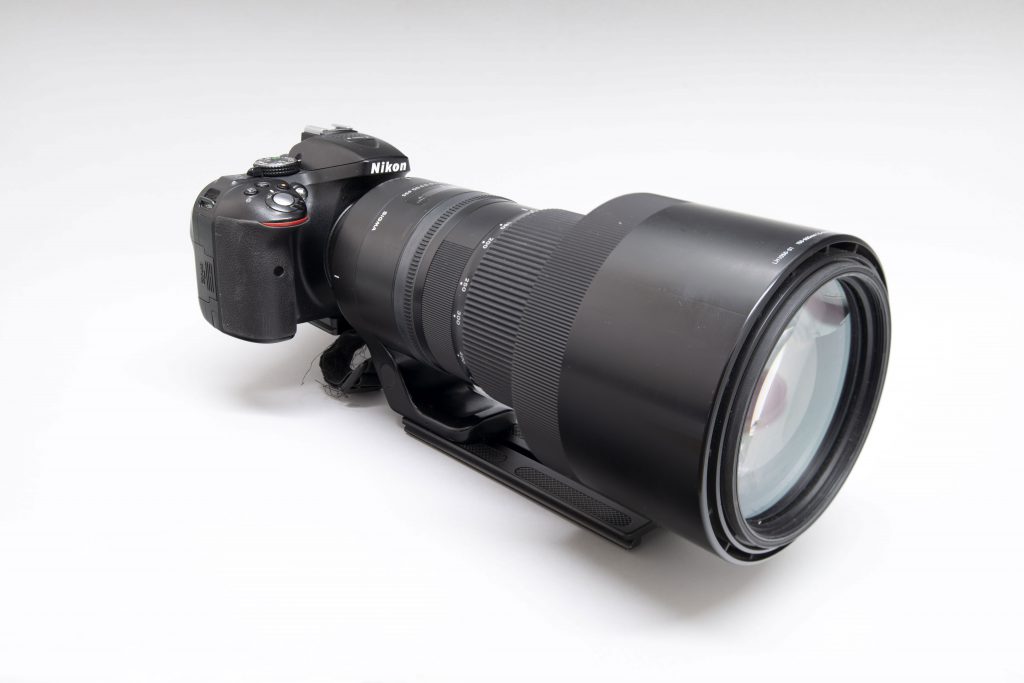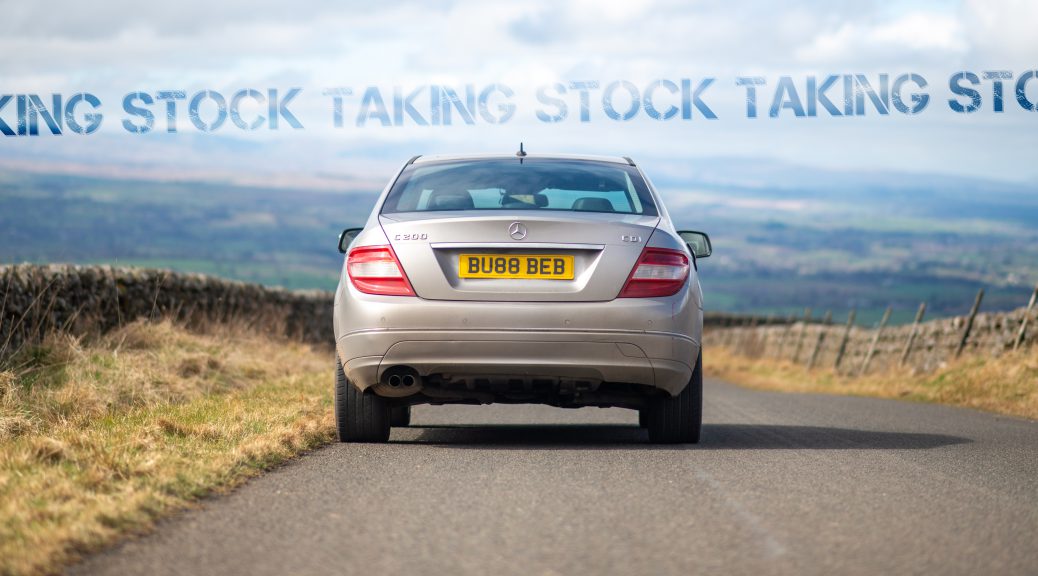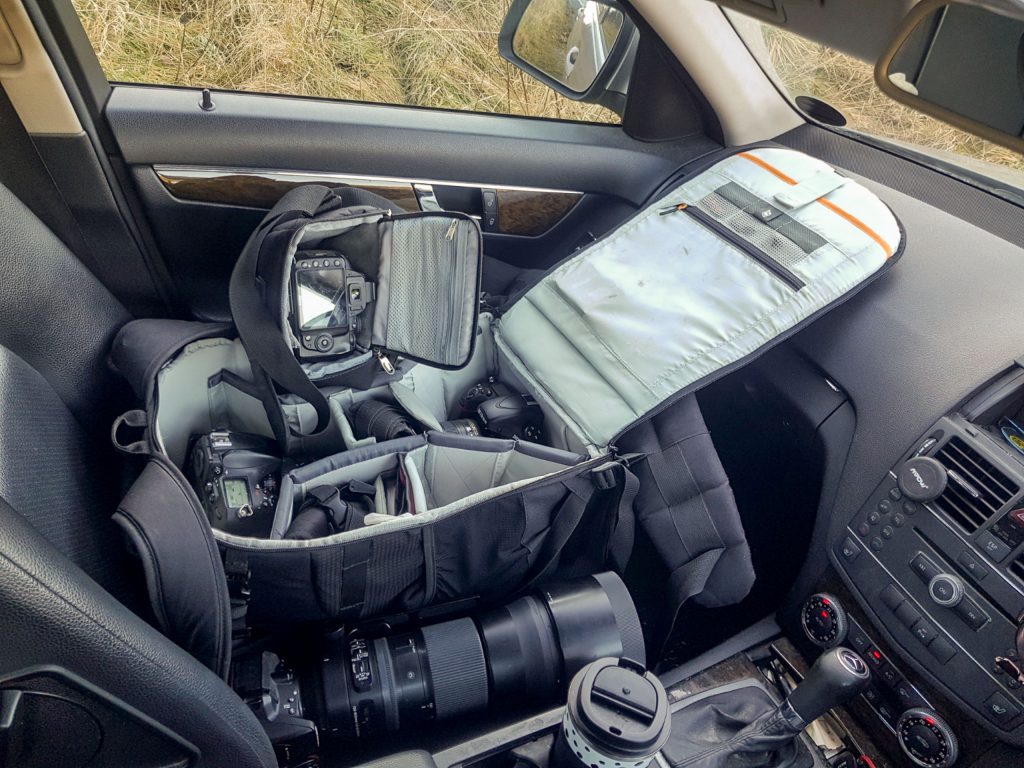“The best camera is the one that’s with you”
– Chase Jarvis
I think perhaps I’m taking Jarvis’s observation a little too much to heart!
This is a bit of a “what’s in your bag?” blog post, though it might be better described as a “what’s all that stuff on your passenger seat?” blog post.
I’m now carrying three camera bags and four cameras with me when I go out prospecting for images. Obviously, not all at once – I ain’t that strong any more – but in the car. When travelling solo, I load up the passenger seat with everything I might need, so it’s immediately to hand.
My main or primary camera is the D800. I have two at the moment to avoid too much lens swapping in the field. One typically has the 17-35mm super wide zoom on, and the other has either the 85mm or the 105mm attached. Also always in the bag are my 14mm Samyang and Nikkor 50mm. This collection is principally my landscape and general photography cameras and lenses, of course with added macro. Immediately available on the passenger seat, I’ll grab whichever camera has the lens which best suits the scene or composition I’ve spotted while driving around. It can induce a bit of a “spray and pray” element to my days out but it does accelerate the process somewhat, enabling me to get further and photograph more. There is, of course, a stronger argument for slowing down and taking stock of the scene before trying to rinse an image out of it. But I digress…
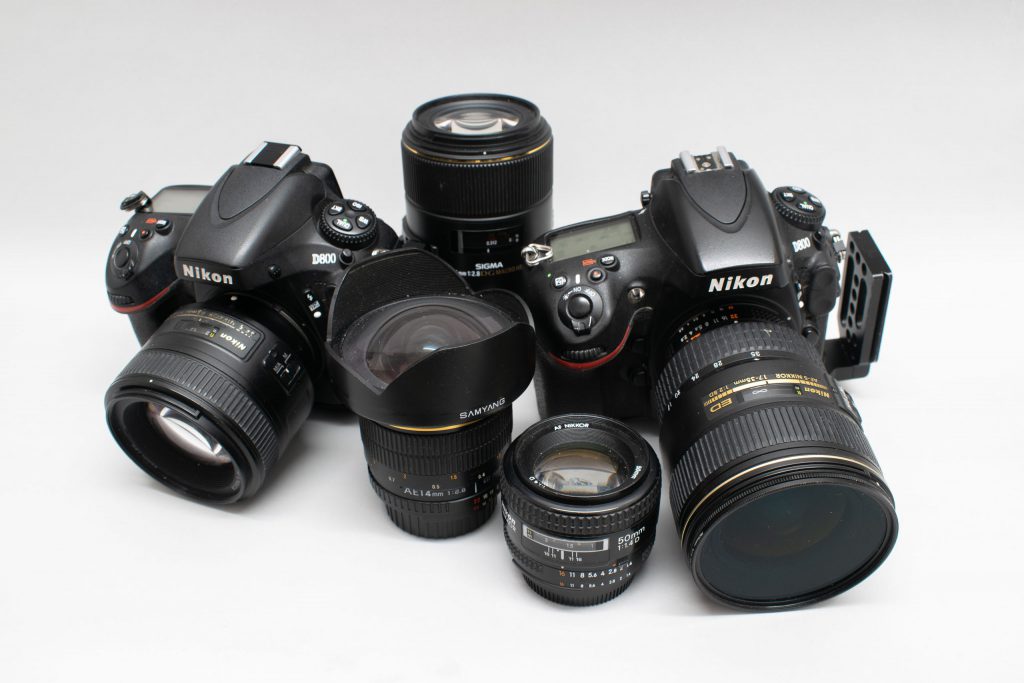
I also have to hand my infrared-converted D3000 with an AF-S 16-85mm zoom lens attached. If you’re a long-time reader, you may remember that I’ve struggled to find the ideal lens to put on my infrared camera. This general purpose lens has worked out very well so far, and enables me to shoot the full frame equivalent of 24-127.5mm. So far, I haven’t found any infrared hotspot issues with the lens and I do have to pay close attention to its focus accuracy, but if it turns out that there are problems in some conditions then I always have the 14mm f/2.8 Samyang to fall back on. The Samyang has faithfully delivered consistently solid results. At an equivalent of 21mm in full frame terms, its application is a little bit limited, though it does generally tend to suit my infrared photography needs in the majority of instances.
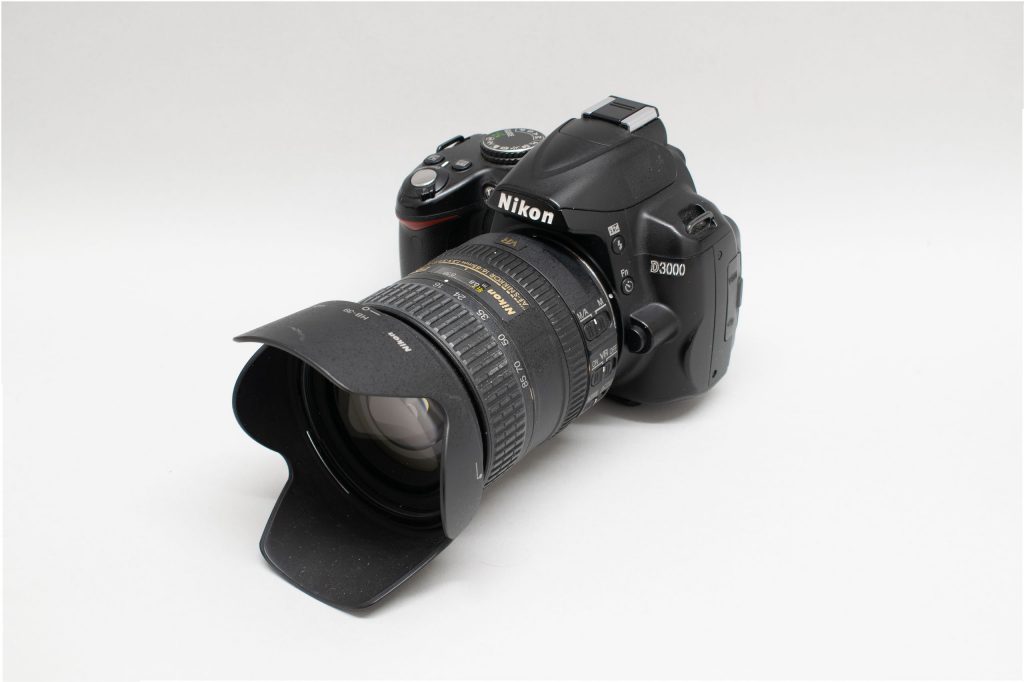
My wildlife workhorse is still the D5300 with Sigma 150-600mm attached. I get such good results from this camera/lens combination that I can’t imagine replacing either. If at some point I go mirrorless, however, the D5300 is most likely the camera that I will replace. I think that’s a long way off, though. Many years, in point of fact. The D5300 may only have a 4 image buffer and a maximum frame rate of around 3fps, but for wildlife photography its 24 megapixel APS-C sensor never fails to get me the shot. The camera is a bit small in the hand, I admit, and this does cause some minor inconveniences but it’s very light indeed, and that’s a very good thing for an old man like me carrying a super-telephoto lens around! The Sigma 150-600mm is of course the wildlife lens of choice for, I’d guess, the vast majority of amateur wildlife photographers. Affectionately named the “moon bazooka” by famed astro-photographer Alyn Wallace (RIP), it’s an incredibly versatile lens.
